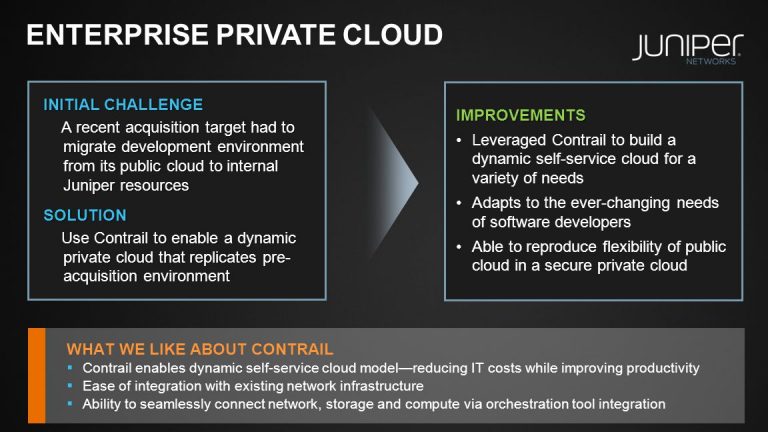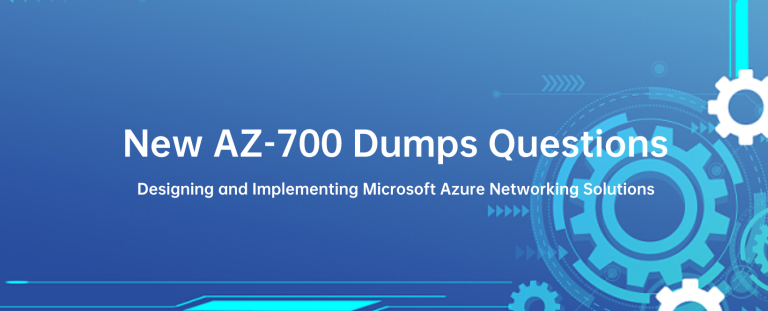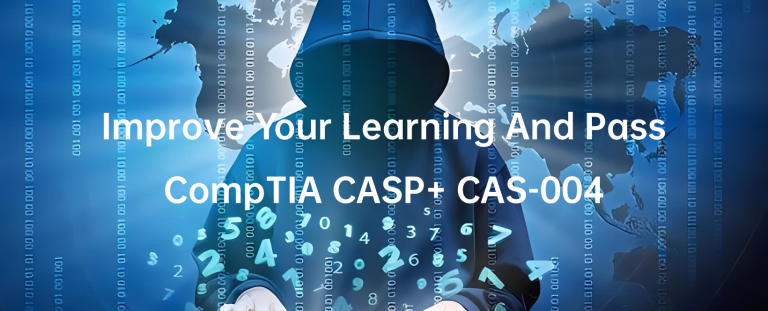
For someone taking the 312-50v12 exam, nothing beats beating the exam. Yes, today is about how to help you beat the Certified Ethical Hacker Exam (CEHv12). Using the latest 312-50V12 dumps, successfully beat the exam.
Pass4itSure’s latest 312-50V12 dumps have been updated https://www.pass4itsure.com/312-50v12.html You can download it to prepare for the exam.
Is EC-COUNCIL 312-50v12 good to pass, where is the difficulty?
The Certified Ethical Hacker Exam (CEHv12) is a certification exam that covers cybersecurity. The difficulty of the exam varies from person to person and can be challenging for many due to its wide range of exams.
Here are some of the difficulties of the 312-50v12 exam:
Heavy content:
The CEHv12 exam requires a great deal of cybersecurity knowledge and knowledge of a variety of different attack techniques, tools, and vulnerabilities.
Updates:
As network technology continues to update, exam content needs to be constantly updated. Therefore, candidates need to continuously learn and update their knowledge.
Technical requirements:
The CEHv12 exam requires an understanding of complex technical details and concepts. In order to pass the exam, candidates need to have a certain technical background and experience.
Time Limit:
The CEHv12 exam has a short time limit and requires a large number of exam questions to be completed in a limited time.
After talking about the difficult points, how to overcome them?
Next, you should understand how to beat the 312-50v12 exam.
Passing the 312-50v12 exam requires adequate preparation and learning with the latest 312-50v12 dumps, as well as mastering the various cybersecurity techniques and tools involved.
Here are a few tips:
- Familiarize yourself with the exam syllabus
- Learn the basics of cybersecurity
- Practice test questions
- Hands-on operation
- Take an official training course
- Pay attention to the review
Take the free 312-50V12 (CEHv12) test
Question 1:
is a set of extensions to DNS that provide the origin authentication of DNS data to DNS clients (resolvers) so as to reduce the threat of DNS poisoning, spoofing, and similar types of attacks.
A. DNSSEC
B. Resource records
C. Resource transfer
D. Zone transfer
Correct Answer: A
The Domain Name System Security Extensions (DNSSEC) is a suite of Internet Engineering Task Force (IETF) specifications for securing certain kinds of information provided by DNS for use on IP networks. DNSSEC is a set of extensions to DNS provide to DNS clients (resolvers) origin authentication of DNS data, authenticated denial of existence, and data integrity, but not availability or confidentiality.
DNSSEC is necessary because the original DNS design did not include security but was designed to be a scalable distributed system. DNSSEC adds security while maintaining backward compatibility.
Question 2:
Cross-site request forgery involves:
A. A request sent by a malicious user from a browser to a server
B. Modification of a request by a proxy between the client and server
C. A browser making a request to a server without the user\’s knowledge
D. A server making a request to another server without the user\’s knowledge
Correct Answer: C
https://owasp.org/www-community/attacks/csrf Cross-Site Request Forgery (CSRF) is an attack that forces an end user to execute unwanted actions on a web application in which they\’re currently authenticated. With a little help of social engineering (such as sending a link via email or chat), an attacker may trick the users of a web application into executing actions of the attacker\’s choosing.
If the victim is a normal user, a successful CSRF attack can force the user to perform state-changing requests like transferring funds, changing their email address, and so forth. If the victim is an administrative account, CSRF can compromise the entire web application.
CSRF is an attack that tricks the victim into submitting a malicious request. It inherits the identity and privileges of the victim to perform an undesired function on the victim\’s behalf. For most sites, browser requests automatically include any credentials associated with the site, such as the user\’s session cookie, IP address, Windows domain credentials, and so forth.
Therefore, if the user is currently authenticated to the site, the site will have no way to distinguish between a forged request sent by the victim and a legitimate request sent by the victim.
CSRF attacks target functionality that causes a state change on the server, such as changing the victim\’s email address or password, or purchasing something. Forcing the victim to retrieve data doesn’t benefit an attacker because the attacker doesn’t receive the response, the victim does.
As such, CSRF attacks target state-changing requests. It\’s sometimes possible to store the CSRF attack on the vulnerable site itself. Such vulnerabilities are called “stored CSRF flaws”. This can be accomplished by simply storing an IMG or IFRAME tag in a field that accepts HTML, or by a more complex cross-site scripting attack.
If the attack can store a CSRF attack on the site, the severity of the attack is amplified. In particular, the likelihood is increased because the victim is more likely to view the page containing the attack than some random page on the Internet. The likelihood is also increased because the victim is sure to be authenticated to the site already.
Question 3:
What is the known plaintext attack used against DES which gives the result that encrypting plaintext with one DES key followed by encrypting it with a second DES key is no more secure than using a single key?
A. Man-in-the-middle attack
B. Meet-in-the-middle attack
C. Replay attack
D. Traffic analysis attack
Correct Answer: B
https://en.wikipedia.org/wiki/Meet-in-the-middle_attack The meet-in-the-middle attack (MITM), a known plaintext attack, is a generic space-time tradeoff cryptographic attack against encryption schemes that rely on performing multiple encryption operations in sequence.
The MITM attack is the primary reason why Double DES is not used and why a Triple-DES key (168-bit) can be brute-forced by an attacker with 256 spaces and 2112 operations.
The intruder has to know some parts of plaintext and their ciphertexts. Using meet-in-the-middle attacks it is possible to break ciphers, which have two or more secret keys for multiple encryption using the same algorithm.
For example, the 3DES cipher works in this way. The meet-in-the-middle attack was first presented by Diffie and Hellman for cryptanalysis of the DES algorithm.
Question 4:
Abel, a cloud architect, uses container technology to deploy applications/software including all its dependencies, such as libraries and configuration files, binaries, and other resources that run independently from other processes in the cloud environment.
For the containerization of applications, he follows the five-tier container technology architecture. Currently. Abel is verifying and validating image contents, signing images, and sending them to the registries. Which of the following tiers of container technology architecture Is Abel currently working in?
A. Tier-1: Developer machines
B. Tier-4: Orchestrators
C. Tier-3: Registries
D. Tier-2: Testing and accreditation systems
Correct Answer: D
The official management decision is given by a senior agency official to authorize the operation of an information system and to explicitly accept the risk to agency operations (including mission, functions, image, or reputation), agency assets, or individuals, based on the implementation of an agreed-upon set of security controls.
Formal declaration by a designated accrediting authority (DAA) or principal accrediting authority (PAA) that an information system is approved to operate at an acceptable level of risk, based on the implementation of an approved set of technical, managerial, and procedural safeguards. See authorization to operate (ATO).
Rationale: The Risk Management Framework uses a new term to refer to this concept, and it is called authorization. Identifies the information resources covered by an accreditation decision, as distinguished from separately accredited information resources that are interconnected or with which information is exchanged via messaging.
Synonymous with Security Perimeter. For the purposes of identifying the Protection Level for the confidentiality of a system to be accredited, the system has a conceptual boundary that extends to all intended users of the system, both directly and indirectly connected, who receive output from the system. See authorization boundary.
Rationale: The Risk Management Framework uses a new term to refer to the concept of accreditation, and it is called authorization. Extrapolating, the accreditation boundary would then be referred to as the authorization boundary.
Question 5:
Johnson, an attacker, performed online research for the contact details of reputed cybersecurity firms. He found the contact number of sibertech.org and dialed the number, claiming to represent a technical support team from a vendor. He warned that a specific server is about to be compromised and requested sibertech.org to follow the provided instructions.
Consequently, he prompted the victim to execute unusual commands and install malicious files, which were then used to collect and pass critical Information to Johnson\’s machine. What is the social engineering technique Steve employed in the above scenario?
A. Quid pro quo
B. Diversion theft
C. Elicitation
D. Phishing
Correct Answer: A
https://www.eccouncil.org/what-is-social-engineering/ This Social Engineering scam involves an exchange of information that can benefit both the victim and the trickster. Scammers would make the prey believe that a fair exchange will be present between both sides, but in reality, only the fraudster stands to benefit, leaving the victim hanging on to nothing.
An example of a Quid Pro Quo is a scammer pretending to be an IT support technician. The con artist asks for the login credentials of the company\’s computer saying that the company is going to receive technical support in return.
Once the victim has provided the credentials, the scammer now has control over the company\’s computer and may possibly load malware or steal personal information that can be a motive to commit identity theft.
“A quid pro quo attack (aka something for something” attack) is a variant of baiting. Instead of baiting a target with the promise of a good, a quid pro quo attack promises a service or a benefit based on the execution of a specific action.”
Question 6:
Log monitoring tools performing behavioral analysis have alerted several suspicious logins on a Linux server occurring during non-business hours. After further examination of all login activities, it is noticed that none of the logins have occurred during typical work hours.
A Linux administrator who is investigating this problem realizes the system time on the Linux server is wrong by more than twelve hours. What protocol used on Linux servers to synchronize the time has stopped working?
A. Time Keeper
B. NTP
C. PPP
D. OSPP
Correct Answer: B
Question 7:
When conducting a penetration test, it is crucial to use all means to get all available information about the target network. One of the ways to do that is by sniffing the network. Which of the following cannot be performed by passive network sniffing?
A. Identifying operating systems, services, protocols, and devices
B. Modifying and replaying captured network traffic
C. Collecting unencrypted information about usernames and passwords
D. Capturing network traffic for further analysis
Correct Answer: B
Question 8:
Miley, a professional hacker, decided to attack a target organization\’s network. To perform the attack, she used a tool to send fake ARP messages over the target network to link her MAC address with the target system\’s IP address.
By performing this, Miley received messages directed to the victim\’s MAC address and further used the tool to intercept, steal, modify, and block sensitive communication to the target system. What is the tool employed by Miley to perform the above attack?
A. Gobbler
B. KDerpNSpoof
C. BetterCAP
D. Wireshark
Correct Answer: C
Question 9:
Attacker Simon targeted the communication network of an organization and disabled the security controls of NetNTLMvl by modifying the values of LMCompatibilityLevel, NTLMMinClientSec, and RestrictSendingNTLMTraffic.
He then extracted all the non- network login tokens from all the active processes to masquerade as a legitimate user to launch further attacks. What is the type of attack performed by Simon?
A. Internal monologue attack
B. Combinator attack
C. Rainbow table attack
D. Dictionary attack
Correct Answer: A
Question 10:
Which of the following tools is used to detect wireless LANs using the 802.11a/b/g/n WLAN standards on a Linux platform?
A. Kismet
B. Abel
C. Netstumbler
D. Nessus
Correct Answer: A
https://en.wikipedia.org/wiki/Kismet_(software)
Kismet is a network detector, packet sniffer, and intrusion detection system for 802.11 wireless LANs. Kismet will work with any wireless card which supports raw monitoring mode and can sniff 802.11a, 802.11b, 802.11g, and 802.11n traffic.
Question 11:
A hacker has successfully infected an internet-facing server which he will then use to send junk mail, take part in coordinated attacks, or host junk email content. Which sort of trojan infects this server?
A. Botnet Trojan
B. Banking Trojans
C. Turtle Trojans
D. Ransomware Trojans
Correct Answer: A
Question 12:
The “Gray-box testing” methodology enforces what kind of restriction?
A. Only the external operation of a system is accessible to the tester.
B. The internal operation of a system is only partly accessible to the tester.
C. Only the internal operation of a system is known to the tester.
D. The internal operation of a system is completely known to the tester.
Correct Answer: D
White box testing (also known as clear box testing, glass box testing, transparent box testing, and structural testing) is a method of software testing that tests the internal structures or workings of an application, as opposed to its functionality (i.e. black-box testing). In white-box testing, an internal perspective of the system, as well as programming skills, are used to design test cases.
The tester chooses inputs to exercise paths through the code and determines the expected outputs. This is analogous to testing nodes in a circuit, e.g. in-circuit testing (ICT). White-box testing can be applied at the unit, integration, and system levels of the software testing process.
Although traditional testers tended to think of white-box testing as being done at the unit level, it is used for integration and system testing more frequently today.
It can test paths within a unit, paths between units during integration, and between subsystems during a system-level test. Though this method of test design can uncover many errors or problems, it has the potential to miss unimplemented parts of the specification or missing requirements.
Where white-box testing is design-driven,[1] that is, driven exclusively by agreed specifications of how each component of the software is required to behave (as in DO-178C and ISO 26262 processes) then white-box test techniques can accomplish assessment for unimplemented or missing requirements.
White-box test design techniques include the following code coverage criteria:
1. Control flow testing
2. Data flow testing
3. Branch testing
4. Statement coverage
5. Decision coverage
6. Modified condition/decision coverage
7. Prime path testing
8. Path testing
Question 13:
Gavin owns a white-hat firm and is performing a website security audit for one of his clients. He begins by running a scan that looks for common misconfigurations and outdated software versions. Which of the following tools is he most likely using?
A. Nikto
B. Nmap
C. Metasploit
D. Armitage
Correct Answer: B
Question 14:
You are tasked to configure the DHCP server to lease the last 100 usable IP addresses in the subnet. 1.4.0/23. Which of the following IP addresses could be teased as a result of the new configuration?
A. 210.1.55.200
B. 10.1.4.254
C. 10.1.5.200
D. 10.1.4.156
Correct Answer: C
Question 15:
A security analyst uses Zenmap to perform an ICMP timestamp ping scan to acquire information related to the current time from the target host machine.
Which of the following Zenmap options must the analyst use to perform the ICMP timestamp ping scan?
A. -PY
B. -PU
C. -PP
D. -Pn
Correct Answer: C
Passcertguide shares other exam questions that you can also check out.
Easily help you pass the exam with the help of Pass4itSure 312-50V12 dumps. Get the latest 312-50v12 exam questions at https://www.pass4itsure.com/312-50v12.html the right way to pass.




